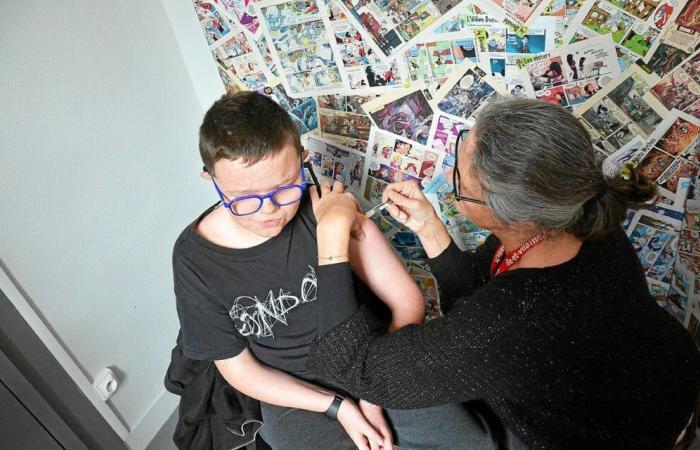It is 11:15 a.m. this Tuesday, November 5, 2024 at Saint-Yves college, in Mordelles, southwest of Rennes. Sitting alone in a school administration office, Ewan, a 5th grade student at this private college in the suburbs of Rennes, is worried. However, he is not summoned to the principal’s office for any stupidity or skipping class in order. It is with a nurse that the teenager from Chavagne has an appointment. The reason? In a few seconds, he will be vaccinated against human papillomavirus infections, a vaccine recommended by the Regional Health Agency (ARS), but not obligatory. Barely enough time to say that he “doesn’t like needles”, and it’s already over!
Like Ewan, 24 young people from this college were vaccinated this Tuesday, all 5th grade students, as part of the second edition of the national vaccination campaign against papillomaviruses in colleges. In Brittany, 389 public and private colleges, including 110 in Ille-et-Vilaine, participate. “The papillomavirus causes 6,000 cancers per year in France, particularly of the cervix, and 1,100 deaths,” observes David Le Goff, departmental director of the ARS. These are preventable cancers because they are transmissible. And eight out of ten people will be infected one day. »
45% of women and 15% of men vaccinated
The idea of the ARS? Make vaccination visible, and emphasize its benefit, for both girls and boys. “This vaccine has a 90% success rate, it works very well. In the countries of northern Europe where the vaccination rate is very high, papillomavirus infections have almost disappeared. For vaccination to have a real impact, according to the Health Agency, 80% of the population should be covered. “However, today, 45% of women and 15% of men are vaccinated. So we still have a way to go.”
The stated objective is to have vaccinated 80% of the population in 2030. To achieve this, the ARS is counting, in particular, on colleges. And on the age group of 5th grade students, aged 12-13. “We recommend vaccinating between 12 and 14 years of age,” explains David Le Goff. The earlier the vaccination is given, the more effective it is. At this age, two doses are needed, it is three when the patient is older. »
3,100 vaccinations this year in Ille-et-Vilaine
This year, of the 14,000 5th grade students in Ille-et-Vilaine, 3,100 have so far given their agreement to be vaccinated. Or 22% of young people vaccinated by this device. It was more last year, with some 4,000 vaccinations. “We would not have had as many vaccinations if we had stuck to the normal circuit where a child is vaccinated at his doctor’s office,” points out Jean-Luc Chenut, president of the Ille-et-Vilaine Departmental Council. This year, the figures are a little lower, but they demonstrate the progress of vaccination outside of college in families because young people talk about it among themselves and at home. »
In the playground, Paul was vaccinated this Tuesday: “I was afraid it would hurt, but it went well. I advise doing it, I understand that it will protect us from getting cancer, so I am going to talk about it to those in my class.” Lou-Ann, Lena and Sheyma were also given the injection. “We also recommend doing it, even if it hurt a little. And then thanks to the vaccine, we missed math class.”
Health






